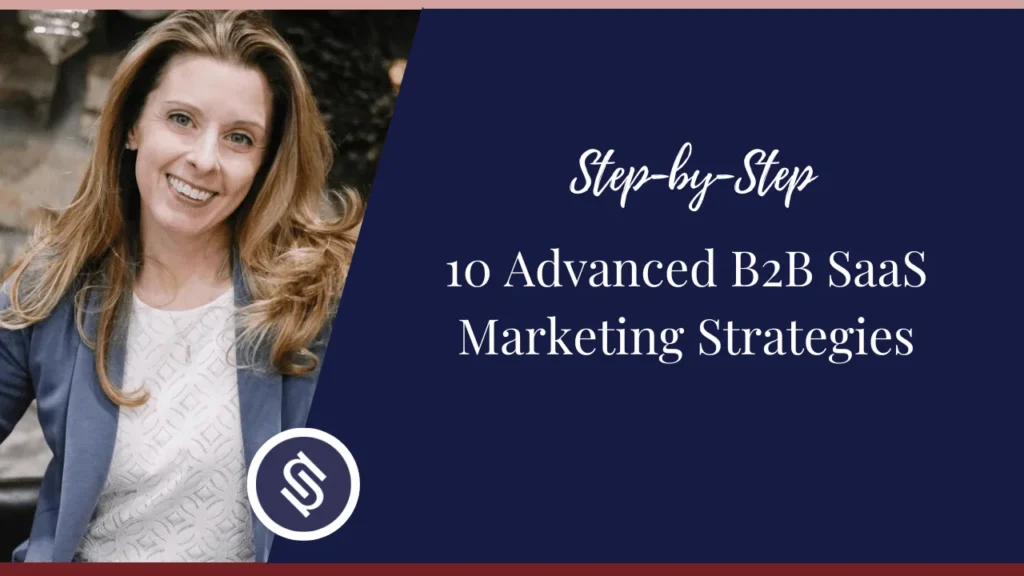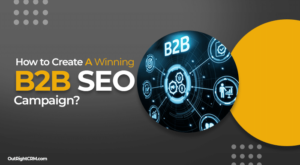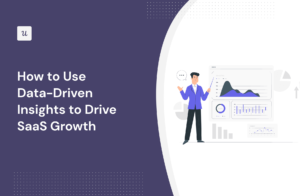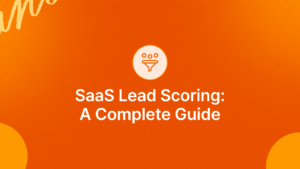SaaS companies need strong content marketing to stay competitive. Advanced strategies can set them apart.
In the fast-paced world of Software as a Service (SaaS), basic content marketing is not enough. Companies need to adopt advanced strategies to attract and retain customers. This means going beyond blog posts and social media updates. It involves using data-driven insights, personalized content, and targeted campaigns.
By implementing these advanced tactics, SaaS companies can effectively engage their audience, build brand loyalty, and drive growth. This blog post will explore some of the most effective advanced SaaS content marketing strategies. Whether you’re a marketer looking to refine your approach or a SaaS company aiming to enhance your content game, these insights will help you stay ahead in the industry.
Introduction To Saas Content Marketing
Content marketing is a vital part of SaaS. It helps businesses attract, engage, and retain customers. By providing valuable and relevant content, SaaS companies can build trust and authority in their niche.
Importance Of Content Marketing
Content marketing is crucial for SaaS companies for several reasons:
- Brand Awareness: Quality content can increase your brand’s visibility.
- Lead Generation: Helpful content can convert readers into leads.
- Customer Education: Content can help users understand your product.
- SEO Benefits: Good content improves search engine rankings.
By focusing on these areas, SaaS companies can achieve significant growth. Content marketing is not just about creating blog posts. It includes various types of content such as:
- Videos
- Infographics
- Webinars
- E-books
- Case studies
Challenges In Saas Marketing
Despite its importance, SaaS content marketing faces several challenges:
- Complex Products: SaaS products can be difficult to explain.
- High Competition: Many SaaS companies compete for the same audience.
- Customer Retention: Keeping customers engaged is challenging.
- Content Saturation: The internet is filled with content, making it hard to stand out.
To overcome these challenges, SaaS companies need to focus on creating unique and valuable content. This requires a deep understanding of their audience and their needs. Regularly updating and optimizing content is also essential.
| Challenge | Solution |
|---|---|
| Complex Products | Use simple language and visuals to explain. |
| High Competition | Create unique and valuable content. |
| Customer Retention | Engage with customers regularly. |
| Content Saturation | Focus on niche topics. |

Credit: outreachmonks.com
Enhance your knowledge on SEO and Analytics by exploring this related piece. How to Create a Winning B2B SEO Campaign: Proven Strategies
Crafting Compelling Content
Creating engaging content is crucial for successful SaaS content marketing. It draws in your audience, keeps them interested, and turns them into loyal customers. To craft compelling content, you must focus on understanding your audience and delivering value with every piece.
Identifying Target Audience
Before writing, know who you are writing for. Identify your target audience’s needs, preferences, and pain points. This ensures your content resonates with them. Use tools like surveys, social media insights, and analytics to gather this information.
| Method | Description |
|---|---|
| Surveys | Ask direct questions to understand preferences. |
| Social Media Insights | Track engagement and comments for insights. |
| Analytics | Analyze website data to see what content works. |
Creating Value-driven Content
Content should not just attract but also provide value. Value-driven content addresses your audience’s problems and offers solutions. This builds trust and positions your brand as an authority. Use the following strategies to create valuable content:
- How-To Guides: Step-by-step solutions for common problems.
- Case Studies: Show real-life success stories of your product.
- Expert Interviews: Share insights from industry leaders.
Remember, quality over quantity. Each piece of content should offer something unique and valuable to your readers.
Leveraging Seo For Saas
Effective SEO strategies can drive organic traffic to your SaaS platform. This means more visibility and more potential customers. By focusing on specific tactics, you can improve your website’s ranking on search engines. This section will delve into two crucial aspects: Keyword Research Strategies and Optimizing Content for Search Engines.
Keyword Research Strategies
Identifying the right keywords is the first step in your SEO journey. You need to understand what your audience is searching for. Use tools like Google Keyword Planner or Ahrefs to find relevant keywords.
- Start with broad terms related to your SaaS product.
- Look for long-tail keywords with lower competition.
- Analyze your competitors’ keywords to find gaps.
Let’s consider an example:
| Keyword | Search Volume | Competition |
|---|---|---|
| Project Management Software | 10,000 | High |
| Best Project Management Tools | 5,000 | Medium |
| Project Management Software for Small Business | 1,000 | Low |
Targeting long-tail keywords like “Project Management Software for Small Business” can give you an edge. These keywords have less competition and more specific search intent.
Looking to expand your understanding of SEO and Analytics? This article could be just what you need. Local SEO Enhancements With Niche SaaS Tools: Boost Your Rankings
Optimizing Content For Search Engines
Once you have your keywords, the next step is content optimization. This involves using your chosen keywords in a natural way throughout your content.
- Include primary keywords in the title and meta description.
- Use keywords in the first 100 words of your content.
- Ensure your content is readable and provides value.
- Use header tags (H1, H2, H3) to structure your content.
- Optimize images with alt text that includes keywords.
Here’s an example of optimized content:
Title: Best Project Management Software for Small Businesses
Meta Description: Discover the top project management software designed for small businesses. Boost your productivity with these tools.
By following these steps, you can improve your content’s search engine visibility. This will lead to higher rankings, more clicks, and more conversions.

Credit: www.youtube.com
Utilizing Social Media Platforms
In the fast-paced world of SaaS content marketing, social media platforms play a crucial role. They offer a direct line to your audience and help spread your message far and wide. But, how do you effectively utilize these platforms? Let’s dive into some advanced strategies.
Choosing The Right Platforms
Not all social media platforms will benefit your SaaS business. It’s essential to choose the right ones based on your target audience. Here’s a simple guide:
| Platform | Audience |
|---|---|
| Professionals, B2B | |
| Tech-savvy, Influencers | |
| General audience, B2C | |
| Visual content lovers, Younger audience |
Identify where your audience spends their time. Use analytics tools to gather data. Focus your efforts on 2-3 key platforms. This ensures you don’t spread your resources too thin.
Engaging With Your Audience
Engagement is more than just posting content. It’s about building relationships. Respond to comments and messages promptly. Show your audience that you value their input.
Here are some tips for engaging effectively:
- Ask questions in your posts.
- Share user-generated content.
- Host live sessions or Q&A.
- Create polls and surveys.
Consistency is key. Post regularly but focus on quality over quantity. Use visuals to make your posts more attractive. Videos, infographics, and images increase engagement rates.
Remember, social media is about being social. Be genuine. Offer value. Build trust. Your audience will respond positively.
Interested in SEO and Analytics? We've got you covered with this resourceful post. Data-Driven Social Media Strategies With SaaS Tools: Boost Engagement
Email Marketing Tactics
Email marketing remains a powerful tool for SaaS content marketing. It helps in building relationships and driving conversions. Let’s explore effective email marketing tactics for SaaS companies.
Building A Subscriber List
Creating a strong subscriber list is essential. Start with a clear call to action on your website. Offer valuable content like eBooks or whitepapers in exchange for emails. Use pop-up forms sparingly to avoid annoying users.
Collaborate with industry influencers. They can help promote your content. This will attract more subscribers. Use social media platforms. Encourage followers to join your email list for exclusive updates.
Crafting Effective Email Campaigns
Personalize your email campaigns. Address subscribers by their first name. This makes emails feel more personal. Segment your list based on user behavior or interests. Tailor your messages to meet their needs.
Keep email content concise and engaging. Use compelling subject lines. They should encourage recipients to open the email. Include a clear call to action. Guide your readers on the next steps.
Regularly analyze your email campaigns. Track open and click rates. Adjust your strategies based on this data. Continuously improve your email marketing efforts for better results.
Harnessing Video Content
Video content has become a cornerstone of effective SaaS content marketing strategies. It engages users better than text and static images. Videos help explain complex concepts simply. They also increase user retention and conversion rates.
Types Of Video Content
There are several types of video content you can use. Explainer videos clarify what your software does. They break down features and benefits. Demo videos show your product in action. They guide users through tasks step-by-step. Customer testimonial videos build trust. They share real experiences from satisfied users. Webinars offer in-depth knowledge. They position you as an expert. Finally, behind-the-scenes videos humanize your brand. They show the people and processes behind your product.
Best Practices For Video Marketing
Keep your videos short and to the point. Attention spans are short. Aim for two to three minutes. Use high-quality visuals and sound. Poor quality can turn users away. Add captions for accessibility. Many people watch videos without sound. Optimize your videos for SEO. Use relevant keywords in titles, descriptions, and tags. Share your videos on multiple platforms. Reach a wider audience. Include a clear call to action. Guide viewers on what to do next. Track performance metrics. Analyze what works and improve accordingly.
Analyzing Performance Metrics
Analyzing performance metrics is essential for any advanced SaaS content marketing strategy. Performance metrics help you understand what is working and what needs improvement. By focusing on key metrics, you can make data-driven decisions that enhance your marketing efforts.
Key Metrics To Track
Tracking the right metrics ensures you have a clear picture of your content’s performance. Here are some key metrics to monitor:
- Traffic: Monitor the number of visitors to your site.
- Engagement: Track likes, shares, and comments on your content.
- Conversion Rate: Measure how many visitors turn into leads or customers.
- Bounce Rate: Check the percentage of visitors who leave your site quickly.
- Time on Page: Look at how long visitors stay on your pages.
Tools For Analytics
Using the right tools can simplify the process of analyzing performance metrics. Here are some essential tools for analytics:
| Tool | Description |
|---|---|
| Google Analytics | A comprehensive tool for tracking website traffic and user behavior. |
| SEMrush | An SEO tool that provides insights into keywords and site performance. |
| HubSpot | A marketing platform that offers detailed analytics and reporting. |
| Hotjar | A tool for understanding user behavior through heatmaps and session recordings. |
Each of these tools offers unique features that can enhance your analytics capabilities. By using them, you can get a clearer picture of your content’s performance and identify areas for improvement.

Credit: www.flyingvgroup.com
Scaling Content Marketing Efforts
Scaling content marketing efforts is crucial for SaaS businesses aiming for growth. It involves enhancing the reach and impact of your content without a proportional increase in cost or time. You can achieve this through automation, strategic collaborations, and efficient resource management.
Automating Marketing Processes
Automation can save time and reduce human error. Use tools to schedule posts, manage emails, and analyze data. For instance, tools like HubSpot and Mailchimp can automate email campaigns. This ensures timely delivery and consistent engagement with your audience.
Content management systems (CMS) like WordPress can streamline your content creation process. They offer plugins and integrations to automate repetitive tasks. This allows your team to focus on creating high-quality content.
Automating social media posts with platforms like Buffer or Hootsuite can maintain a steady online presence. These tools can schedule posts, track engagement, and provide insights. This data helps refine your strategy and improve results.
Collaborating With Influencers
Influencer collaborations can amplify your content reach. Identify influencers in your niche with a substantial following. They should align with your brand values and audience.
Reach out to these influencers with clear collaboration proposals. Offer value in return, like free access to your SaaS product. Influencers can create authentic content that resonates with their followers. This builds trust and drives traffic to your platform.
Track the performance of influencer collaborations. Use tools to measure engagement and conversions. This data helps optimize future collaborations for better results.
Future Trends In Saas Content Marketing
As the SaaS industry evolves, so does the landscape of content marketing. Companies need to stay ahead of trends to remain competitive. Future trends in SaaS content marketing are crucial to understand. This helps in effectively reaching the target audience and driving conversions.
Emerging Technologies
Emerging technologies play a significant role in shaping SaaS content marketing. Artificial intelligence (AI) is one such technology. AI can analyze user behavior and personalize content. This helps in delivering the right message to the right audience.
Virtual reality (VR) and augmented reality (AR) are also gaining traction. These technologies provide immersive experiences. They can transform how users interact with content. Enhanced user engagement can lead to better retention rates.
Blockchain technology offers new opportunities. It ensures data security and transparency. This builds trust with the audience. Companies should explore these technologies to stay relevant.
Adapting To Market Changes
Market changes are inevitable. SaaS companies must adapt their content strategies. Understanding consumer behavior is key. This helps in creating content that resonates with the audience.
Focus on user-generated content. Encourage reviews, testimonials, and social media mentions. This builds credibility and trust. Interactive content like quizzes and polls can also engage users. It makes the content more relatable.
Stay updated with industry trends. Monitor competitors and market shifts. Adjust your strategy accordingly. Flexibility is vital for long-term success in SaaS content marketing.
Frequently Asked Questions
What Are Advanced Saas Content Marketing Strategies?
Advanced SaaS content marketing strategies include personalized content, leveraging user data, and using AI tools. These strategies help in creating targeted content, improving user engagement, and driving conversions.
How Can Saas Companies Improve Content Marketing?
SaaS companies can improve content marketing by focusing on high-quality, relevant content, utilizing SEO, and analyzing user data. Regularly updating content and engaging with the audience also helps.
Why Is Personalized Content Important For Saas?
Personalized content is crucial for SaaS because it enhances user experience, increases engagement, and improves conversion rates. Tailored content addresses the specific needs and preferences of users.
What Role Does Seo Play In Saas Content Marketing?
SEO is vital in SaaS content marketing as it improves search engine visibility, drives organic traffic, and increases brand credibility. Implementing effective SEO strategies ensures that content reaches the target audience.
Conclusion
Effective SaaS content marketing requires smart strategies. Focus on understanding your audience. Consistent, high-quality content builds trust. Use data to refine your tactics. Stay adaptable to changes. Engaging content leads to better conversions. Keep learning and improving. Success comes with patience and persistence.
Apply these strategies for lasting growth.










